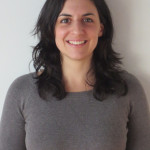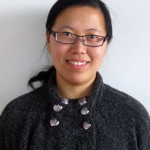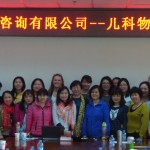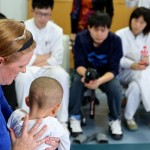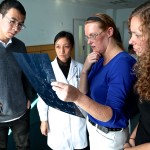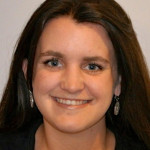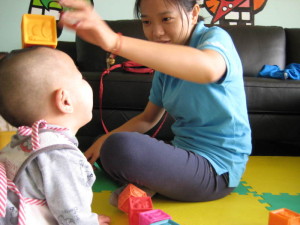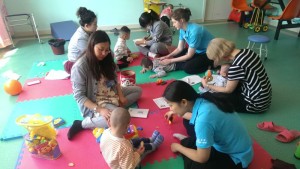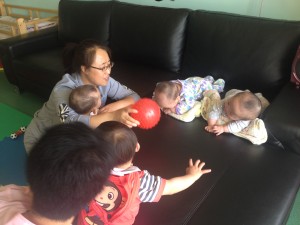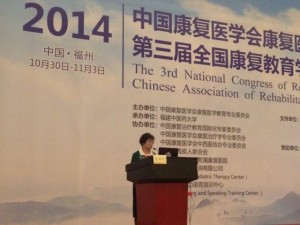One of the most important points to keep in mind when your child or a student in your class is receiving speech and language services is the importance of carrying over intervention in both the home and school settings. It is ideal for parents, therapists, and educators to work together and discuss the techniques that will be effective for each child. There are many strategies that can be incorporated into a child’s daily routine to boost their speech and language skills. In this post, we will focus on the topics of vocal quality and hearing difficulty and ear infections.
Vocal Quality These strategies are intended for students with consistently poor vocal quality. This means their vocal quality may be hoarse, breathy, rough, or they have no voice or their vocal quality gets progressively worse as the day wears on.
- Allow the student to have a water bottle at their desk in order to take frequent sips. If necessary, use a visual aid for the student to track intake- a reward may be needed.
- Discuss healthy ways for students to use their voices, i.e. drink water, no caffeine, no yelling or making strange noises, or to use a quiet voice, but NOT to whisper.
- Provide a positive comment to a student for using good vocal hygiene such as not shouting to get attention.
- Place a visual cue on students’ desk (like a picture of someone talking). When you hear vocal misuse, touch the picture on the desk to help remind the student to use good vocal techniques.
Hearing Difficulties and Ear Infections Ear infections, and/or fluid in the middle ear, are common childhood problems which can reduce a child’s ability to hear effectively within the classroom. Although these are often outgrown by age six, children with persistent problems may have them until approximately the middle school years. They often impact a child’s school performance, as seen by difficulties listening and attending to information presented, thus affecting their language learning and use. Language is the cornerstone of all learning. Understanding and use of appropriate language is necessary for all subjects, from gym to math and science. These strategies are useful for children suffering from ear infections and hearing loss.
- Parents whose child has a history of ear infections are well versed in their knowledge of how to medically manage this problem. The teacher is often notified each year at the beginning of school but often there is no further discussion. There are, however, additional ways which you, as a parent, may become a participant in making sure your child’s needs are met in school when he/she may have fluid in the ear.
- Tell the teacher of your child’s specific signs of an ear infection or fluid because every child is different. These may include some of the following: (Pulling on his ear, ear pain, discharge from the ear, congestion from a cold, decreased attentiveness, irritability, increased questioning-“What?”, inappropriate answers-misunderstanding what is asked or said, or other sudden changes in behavior that you have noted previously).
- Let the teacher know if your child has frequent episodes of ear infections.
- Inform the teacher as soon as you suspect a cold or fluid in the ears so she/he may accommodate your child.
- Request that she/he inform you of noted signs of an infection/fluid.
- Provide a list of ways that the teacher can increase your child’s understanding during these times.You may copy the following list and suggest that they be considered:
- Be responsive to the child/ tune into their current language needs.
- Face the child at all times when addressing the student and the class.
- Gain the child’s attention prior to speaking/ remind to listen.
- Use visual support, stand close to child, and reduce noise levels.
- Provide more small group opportunities and/or use a buddy system.
Your ear nose and throat doctor is the best person to consult with for proper management of ear infections. Consultation with a speech-language pathologist may also be appropriate if you are concerned about your child’s language and speech development due to frequent ear infections or hearing difficulties.
Sophia Guarracino is a US licensed speech-language pathologist with ASHA certification (CCCS). She has four years of experience in school, clinical, and rehabilitative settings. Sophia has evaluated and treated children with articulation and phonological disorders, learning disabilities, attention deficit hyperactivity disorder, autism, and other health impairments. In addition, she has treated children with severe cognitive communicative and sensory disorders in an inclusive school setting. She has been a national-level ASHA presenter for several learning disability topics and has volunteered with organizations that serve children in the US, Latin America, and Germany. Sophia holds a BS in Communication Disorders and an MS in Speech-Language Pathology from Bowling Green University (Ohio, US). Language: English





